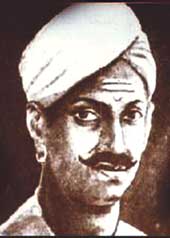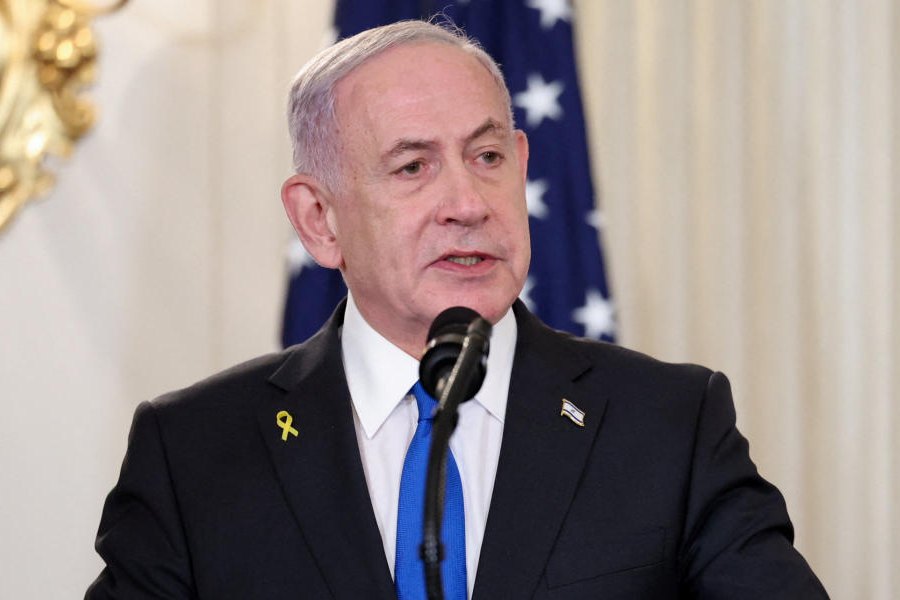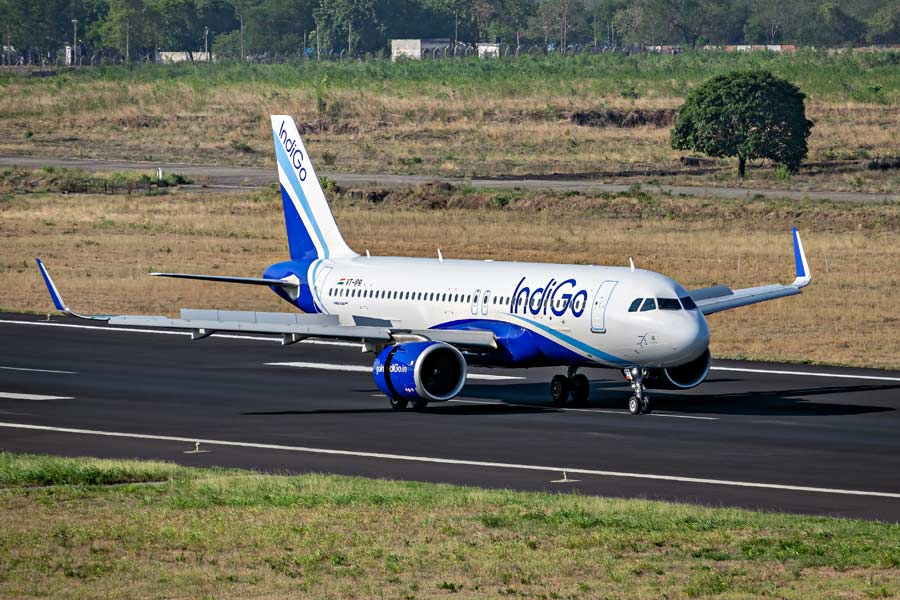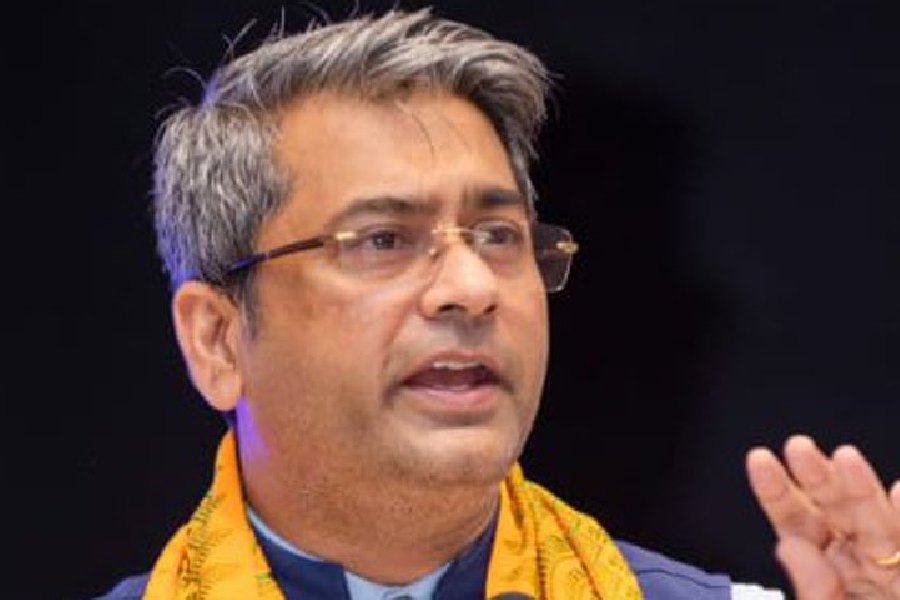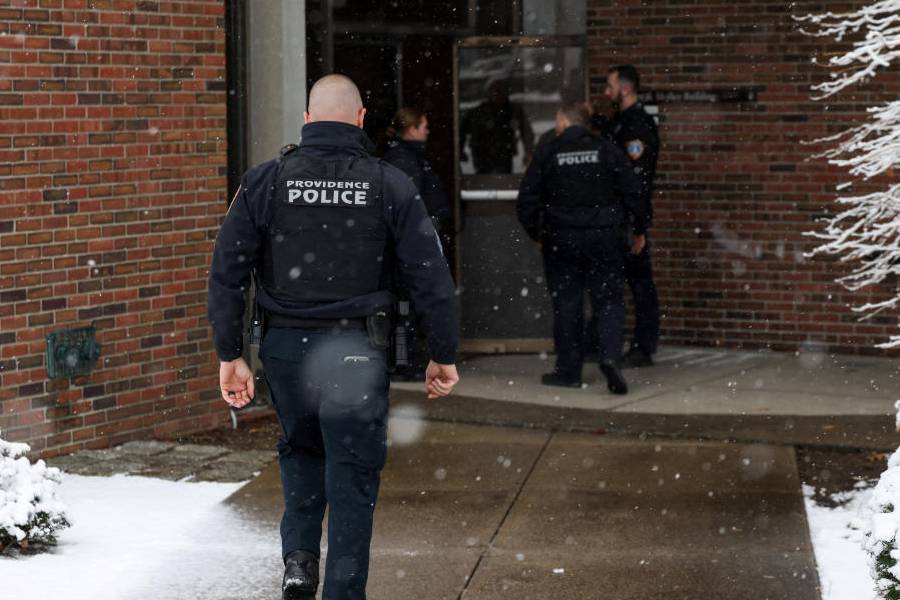 |
In his cramped, low- ceilinged study in a middle-class neighbourhood in Barrackpore, barely 25 km from Calcutta, Kanaipada Roy pores over a stack of newspapers. “They all talk of the 1857 uprising in great detail but hardly mention Mangal Pandey or, for that matter, Barrackpore,” the 53-year-old complains, shaking his head.
A chronicler of local history, Roy says he has been doing his best for the last 10 years or so to help find “the rightful place” in the country’s freedom movement for the “martyr who fired the first shot at the British.” A teacher of philosophy at the local Mahadevananda College, he has delved into military archives, written two books in Bengali on the executed sepoy and organised several seminars on him in Barrackpore.
Yet as the nation celebrates the 150th year of the “sepoy mutiny” — also referred to as the country’s first war of independence — Roy is disappointed that the “entire focus” is on Meerut, and not on Barrackpore, where he says it all began on the afternoon of March 29, 1857. That was when Mangal Pandey, a sepoy in the Bengal Army’s 34th native infantry, rebelled and shot and wounded two British army officers with his musket and sword at the parade ground. And it was there that he was hanged on the morning of April 8, 1857.
Modern writers of his- tory do not necessarily agree that Pandey had been driven entirely by patriotic — or even religious — fervour, as was made out to be in some accounts. For one thing, his fellow soldiers went on record as saying that he was “under the influence of bhang” when he struck, a fact, researchers note, Pandey did not deny during his summary court-martial.
But then, when it comes to Mangal Pandey, it’s often a matter of “heart over head” in Barrackpore, as a professor of the local Surendranath College puts it. For years, Mangal Pandey has been Barrackpore’s hero, one of its few links with history. And, historical evidence or not, it won’t hear anything against what it has always believed in. The emotional pedestal it has put Mangal Pandey on is unshakable, almost indestructible. “He has been our hero. No one can detract from what he has done for our country’s freedom movement,” says 76-year-old Mihirlal Das from Barrackpore’s Murgimahal neighbourhood. “He was the first to raise his voice and gun against the British.”
For all the changes Barrackpore, a subdivisional town in North 24 Parganas district, which also houses a major cantonment of the Indian Army, has witnessed over the years, “respect” for Mangal Pandey has not waned, says Samarendra Mohan Sanyal, chairman of the north Barrackpore municipality.
 |
Attempts to keep his memory alive are visible everywhere. Barrackpore not only has a memorial to Mangal Pandey called smriti soudha near the banks of the Hooghly, but also a Mangal Pandey park, a Mangal Pandey garden and a Mangal Pandey statue erected at a busy intersection by the cantonment board in 2005.
At the park, fronted by a memorial to the fallen soldier, Pandey’s moustachioed bust stares down at the teenaged boys and girls who are sitting on the grass in close embrace in the stifling, midday heat. “Who doesn’t know of Mangal Pandey in Barrackpore,” says Sumit Bhawal, a BA second year student from Surendranath College. “He is the first martyr of the Indian freedom movement,” he adds. His girlfriend looks on blankly. “He (Sumit) is from Barrackpore, but I am not, so I didn’t know,” she says by way of an explanation.
at the park, set up in 1978, a metal canopy shields the bust from the sun, rain and the bird droppings from the tall, radhachura tree hanging over it. Nearby, a baby elephant made of cement raises its trunk as if in salute to the soldier from Ballia, Uttar Pradesh, who shook the British establishment. The statue had two garlands around its neck, but it was not from “any government establishment in Delhi or Calcutta,” says Bidyut Saha, a local businessman who manages the park leased out by the cantonment board. “Two gentlemen came in the middle of this week and garlanded the statue to commemorate the 150th year of the sepoy mutiny in Barrackpore,” he adds.
What upsets Kanaipada Roy most is “this indifference to the man who lit the spark.” He acknowledges the historical import of the uprising in Meerut, where the cantonment sepoys mutinied, killing not only their superiors, but every British man, woman and child they could lay their hands on. “But the rebellion in Meerut began almost a month after Mangal Pandey was hanged in 1857. So why shouldn’t he and Barrackpore be credited with the first war of independence,” Roy asks. Not surprisingly, his book (in Bengali) on Mangal Pandey is titled A tale of injustice.
Clearly, Barrackpore craves a little more attention, an arc of the spotlight glaring on Meerut at the moment. “Are we asking too much when we say the nation should also remember Mangal Pandey and his contribution to the freedom movement,” asks septuagenarian Das. Few disagree in Barrackpore — for people see Pandey as one of their own, no matter where he’d come from. “We are proud of Mangal Pandey and we are also proud that it all happened in Barrackpore,” says municipal chairman Sanyal.
At the park, the feeling for the sepoy almost borders on affection. Guard Kuldip Saha says he “bathes” the statue every day while hosing the garden inside the park. “We take care of him. He has given us so much,” says the man in a khaki uniform and an incongruous pair of slippers. For one thing, he says, Barrackpore’s claim to fame relies largely on the sepoy. For another, the Mangal Pandey park would not be there if there was no Mangal Pandey, he adds. And that, perhaps, is his epitaph.

